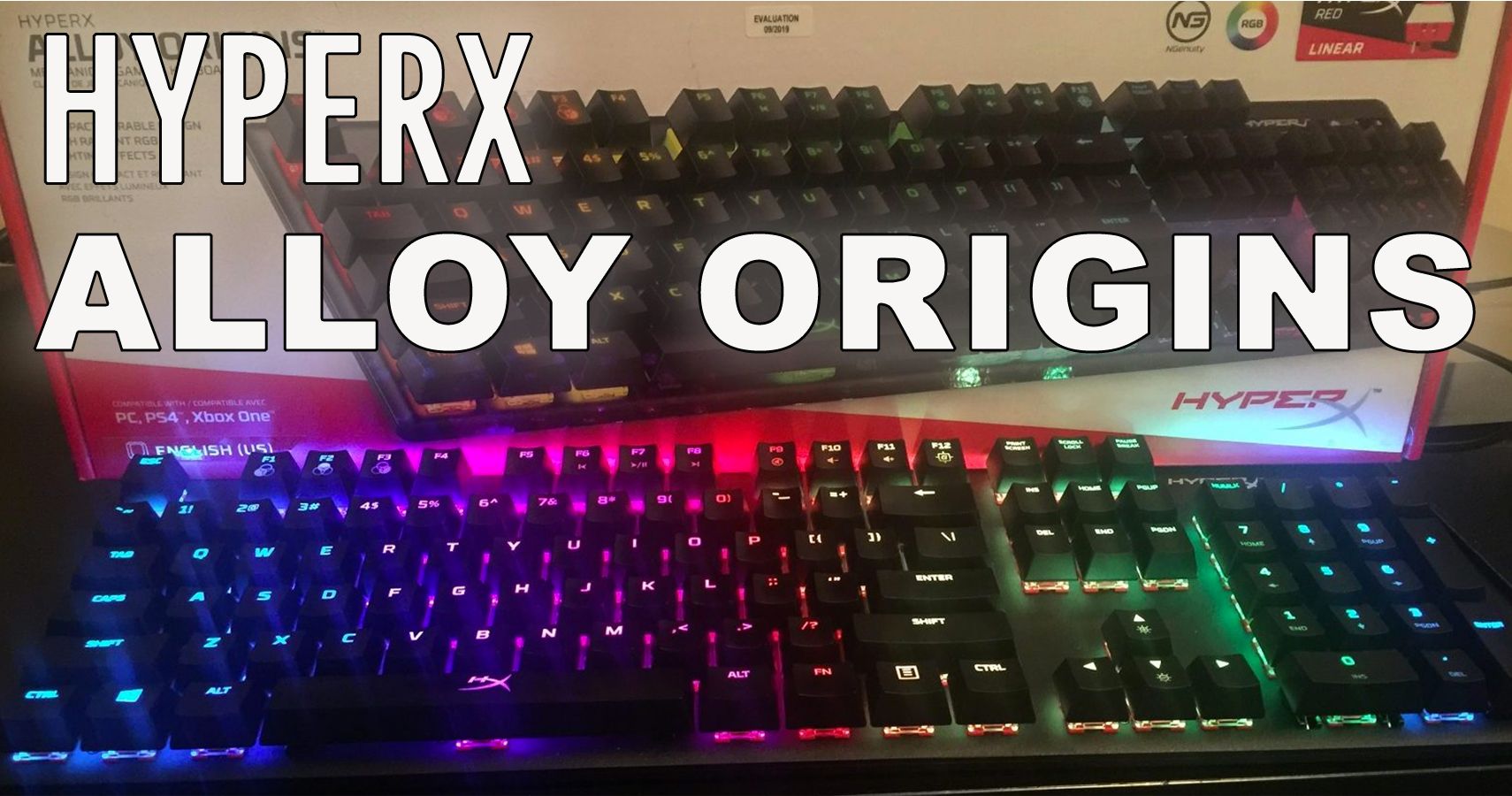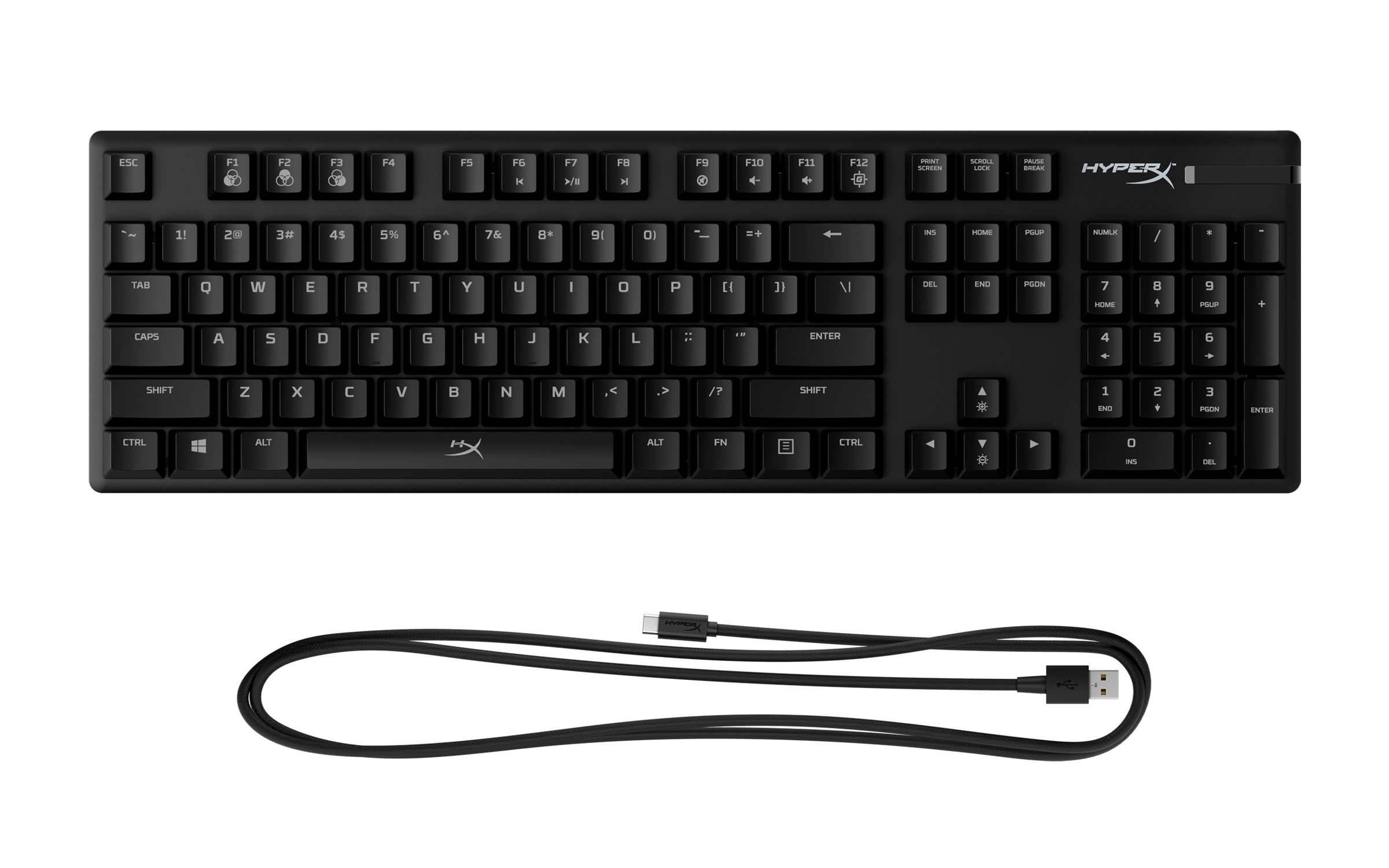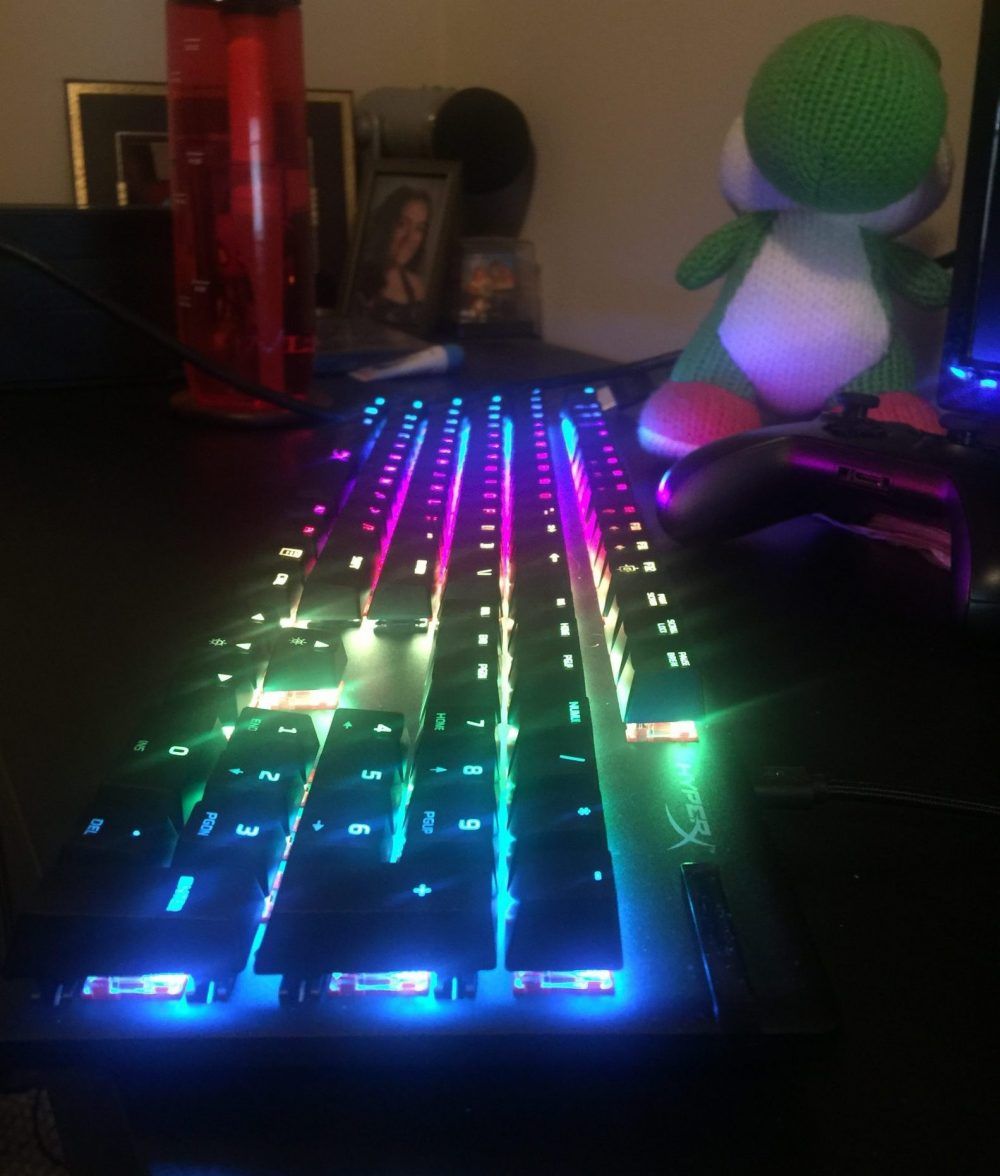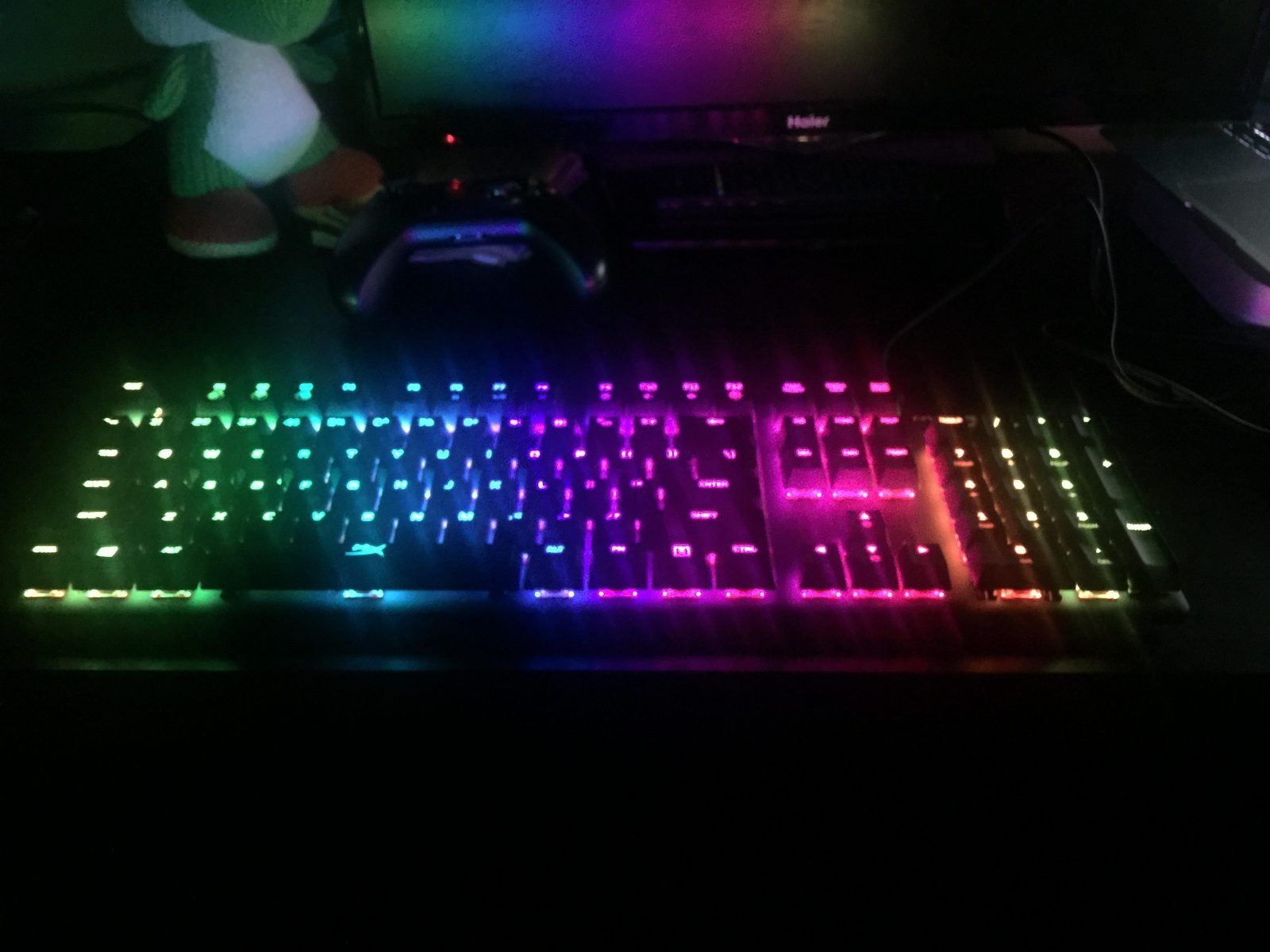A keyboard is a weird thing to review. It seems like people either seriously consider every feature or don't mind them at all. I admit that I fall into the latter camp. For years, I've been working from a small laptop, my desktop a relic that still technically works but would explode if I tried to run Borderlands 3. I'm aware, thanks to friends, what a high-end mechanical keyboard looks and feels like. However, I've been content to just have something that puts words on my screen. So, the HyperX Alloy Origins, with its sturdy construction and vibrant lighting, is something of a revelation for me.
Artful In Its Simplicity
That's not to say that the Ally Origins is some kind of overdesigned monstrosity. It actually presents a very simple package. It's more compact than your average gaming keyboard. The bells and whistles are mostly relegated to a separate program, leaving the unit itself to host nothing more than the keys and a small display for Caps Lock and the like.
This minimalism makes for an aesthetically-pleasing part of your desktop. The basic, all-black color scheme will go with anything, and of course, there's RGB lighting for those who want their setup to go full rainbow.
The Alloy Origins is also very sturdy. The press materials from HyperX boast an "aircraft-grade brushed finish" and I don't doubt it. This thing has some heft to it, and will definitely not slide around on your desk if you don't want it to. To that end, the pieces in back that flip up come with two height settings. I tend to use the highest setting the most, but it's nice to have options. For something so simple, the Ally Origins provides when it comes to options.
Light 'Em Up
Out of the box, the Alloy Origins has three light settings. One creates a rotating rainbow that wipes across your keys, the second makes the whole keyboard one color and changes over time, and the third turns the lights off until you touch a key. You can also tone the brightness up or down by using the function and arrow keys. All of that makes for a pretty basic set of options, but ones that let you adjust all that RGB to your mood. If you want to go further, you have to download the NGenuity software.
NGenuity is a software that will apparently soon encompass most HyperX products. The idea is that you create a profile for your keyboard, and the Alloy Origins will accept it as its new programming. This will allow you to adjust the color of the lights, when they appear, and which keys you want lit. You can even save up to three different profiles, unplug the keyboard, and use your profiles on different machines. This customization also applies to settings such as changing keys or making macros.
NGenuity is the weakest point of the Alloy Origins, and it seems like HyperX knows this. It takes a little longer than you'd think to save profiles to the keyboard, and there's no indicator of progress or when it finishes. It also just feels a little silly to have to open a separate program just to make some quick tweaks. Fortunately, HyperX is already working on a fix. A launch update should add an indicator of profile sync completion. Based on that quick response, I'd say HyperX will do all it can to make NGenuity more intuitive as it attaches to more of its products.
Gamer Stuff
One final point is that the Alloy Origins features HyperX-made switches set at a height of 1.8mm. Again, I'm not a pro PC gamer by any means, but it's always nice to see in-house construction. There's no product a manufacturer can know better than the one it makes itself. As for whether these new switches or the shorter actuation distance makes a big difference, it's hard to say. It felt a little nicer than typing on my laptop, I guess. Overall, I'm happy with this sturdy and gorgeous keyboard and think it will only get better once HyperX works out the issues with NGenuity.
You can learn more about the HyperX Alloy Origins here.
A product sample was provided to The Gamer for this review.




